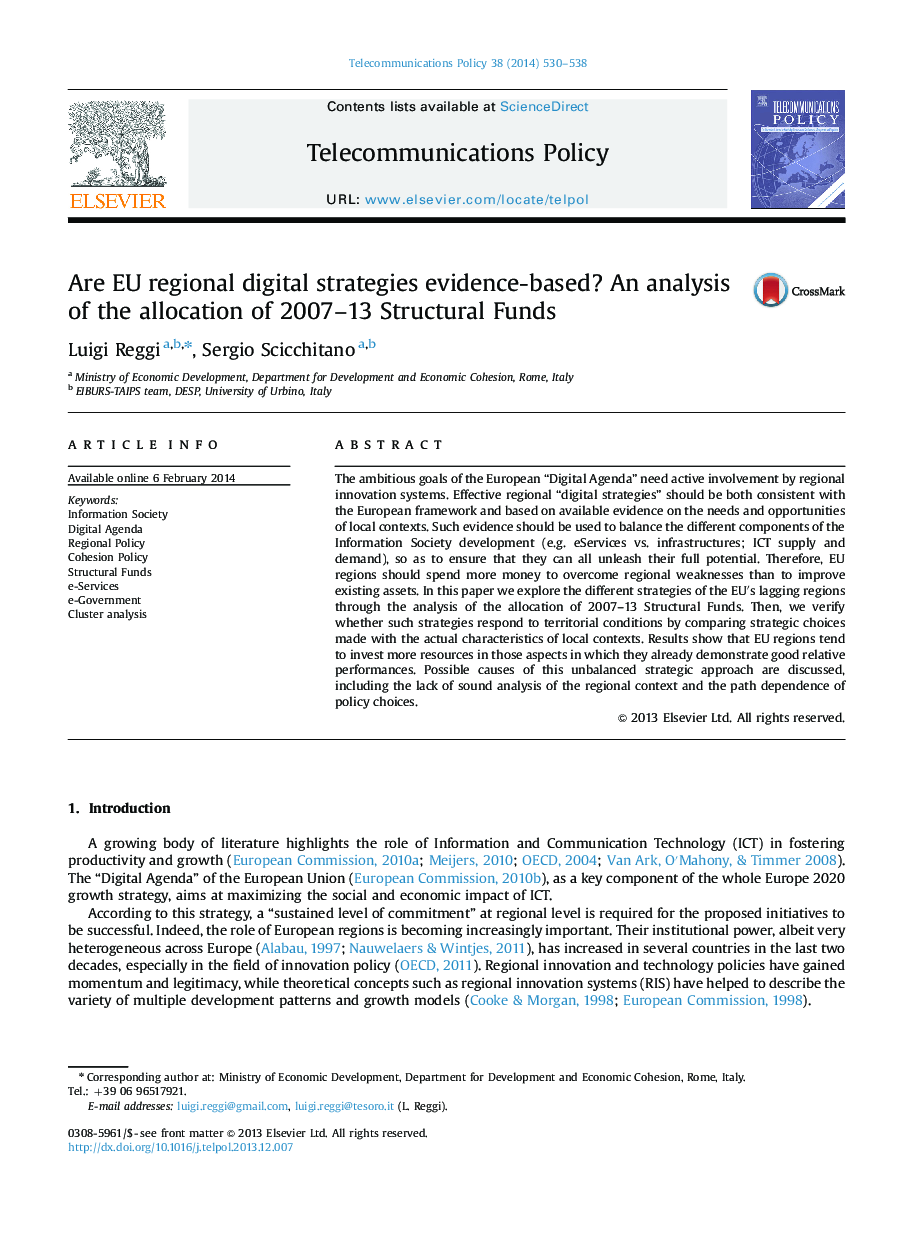| Article ID | Journal | Published Year | Pages | File Type |
|---|---|---|---|---|
| 557302 | Telecommunications Policy | 2014 | 9 Pages |
•EU Digital Agenda requires a “sustained level of commitment” at regional level.•Effective regional digital strategies should be evidence-based and well-balanced.•Three different strategies in the allocation of EU Structural Funds are identified.•EU's less-developed regions tend to invest EU Structural Funds in those strategic aspects where they already show good relative performance.•Possible reasons for this imbalance include the lack of sound analysis of the regional context and the path dependence of policy choices.
The ambitious goals of the European “Digital Agenda” need active involvement by regional innovation systems. Effective regional “digital strategies” should be both consistent with the European framework and based on available evidence on the needs and opportunities of local contexts. Such evidence should be used to balance the different components of the Information Society development (e.g. eServices vs. infrastructures; ICT supply and demand), so as to ensure that they can all unleash their full potential. Therefore, EU regions should spend more money to overcome regional weaknesses than to improve existing assets. In this paper we explore the different strategies of the EU's lagging regions through the analysis of the allocation of 2007–13 Structural Funds. Then, we verify whether such strategies respond to territorial conditions by comparing strategic choices made with the actual characteristics of local contexts. Results show that EU regions tend to invest more resources in those aspects in which they already demonstrate good relative performances. Possible causes of this unbalanced strategic approach are discussed, including the lack of sound analysis of the regional context and the path dependence of policy choices.
